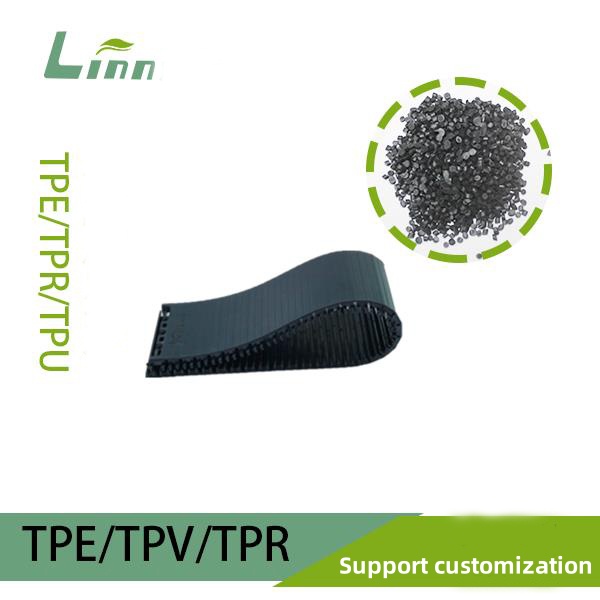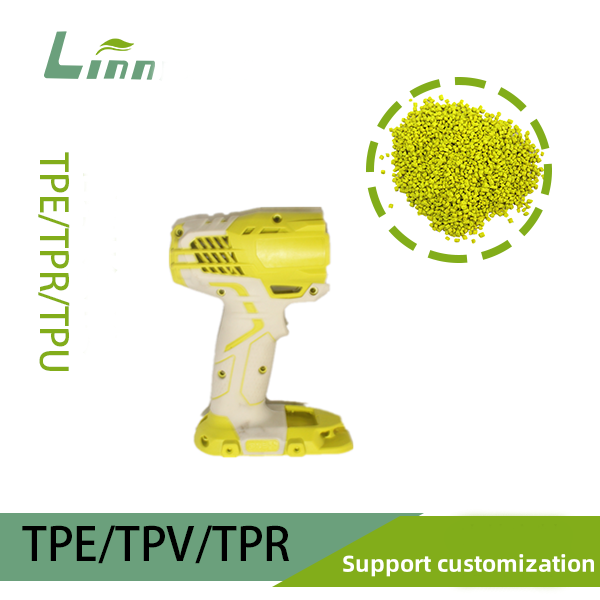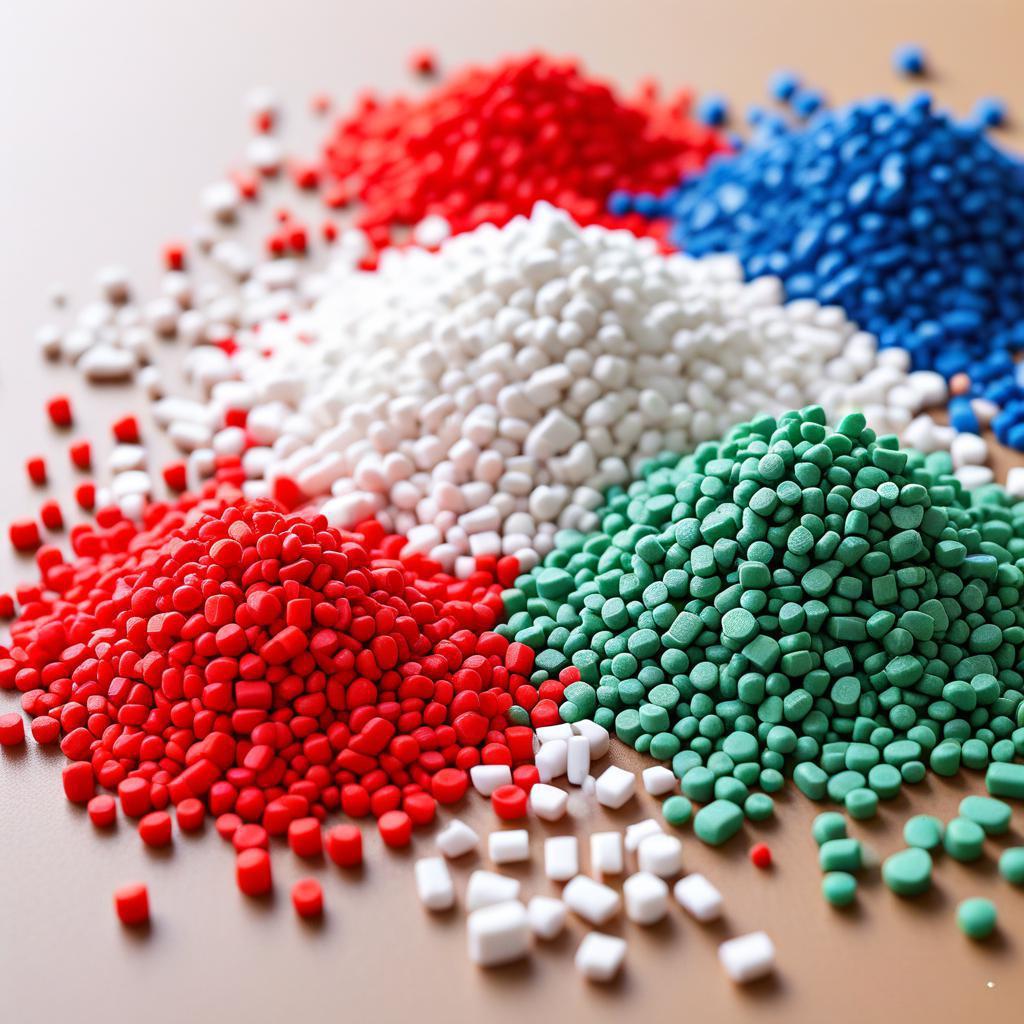There’s a moment in every injection molder’s life when you pull a TPE (Thermoplastic Elastomer) part from the mold, expecting perfection, only to spot those frustrating glossy marks—shiny, uneven patches that scream imperfection. I’ve been there, holding a TPE grip or seal under the shop lights, wondering why these glossy streaks are ruining an otherwise flawless piece. As someone who’s spent years tweaking TPE processes in noisy, bustling factories, I know how maddening these surface defects can be. They don’t just hurt aesthetics; they can lead to rejected batches and unhappy clients. But here’s the good news: glossy marks are fixable. In this article, I’ll share my battle-tested strategies for eliminating glossy marks on TPE injection molded products, diving into the causes and offering practical solutions from my own experience. Let’s roll up our sleeves and make those TPE parts shine—without the unwanted gloss.

What Are Glossy Marks on TPE Products?
Glossy marks, sometimes called shine marks or gloss streaks, are shiny, reflective patches on the surface of TPE parts that contrast with the intended matte or uniform finish. They’re especially noticeable on soft, flexible TPEs used in products like overmolded handles, medical components, or consumer goods. These marks aren’t just cosmetic; they can indicate underlying issues in the molding process that affect part consistency.
From my observations, glossy marks typically arise from:
Uneven Cooling: Variations in cooling rates across the mold cause differences in surface texture, leading to glossy patches.
Mold Surface Issues: Highly polished or improperly textured mold surfaces can create unwanted shine.
Process Parameters: Incorrect temperature, pressure, or injection speed can disrupt uniform material flow and cooling.
Material Properties: TPE’s flowability and additive content influence how the material interacts with the mold surface.
Mold Release Agents: Overuse or improper application of release agents can leave shiny residues.
To banish glossy marks, you need a combination of mold optimization, process adjustments, material tweaks, and maintenance practices. Below, I’ll walk you through each area with detailed, actionable steps.

Strategies to Eliminate Glossy Marks on TPE Products
1. Optimize Mold Design and Surface Finish
The mold is where glossy marks often begin, so getting it right is crucial.
Adjust Mold Surface Texture
Glossy marks are more likely on highly polished mold surfaces (e.g., SPI A-1 finish), which reflect light and create shine. For TPE parts, I recommend a matte or textured finish (e.g., SPI B-2 or C-1) to diffuse light and achieve a uniform, non-glossy appearance. Texturing techniques like sandblasting or chemical etching (e.g., MT-11010 texture) work well. In one project, switching a mold from SPI A-2 to B-2 eliminated glossy marks on a TPE phone case.
Improve Cooling Uniformity
Uneven cooling creates temperature gradients that cause glossy patches. Add or reposition cooling channels to ensure consistent heat dissipation, with channel spacing of 8-12mm. For complex parts, use conformal cooling to target hot spots. I once helped a client reduce glossy marks by 60% by adding two cooling circuits near the gate area.
Check Venting
Trapped air can increase localized pressure, contributing to glossy marks. Add vent slots (depth 0.01-0.03mm) in areas prone to air entrapment, ensuring smooth melt flow without flash.
Here’s a reference table for mold optimization:
|
Optimization Area |
Recommended Specification |
Notes |
|---|---|---|
|
Mold Surface Finish |
SPI B-2 or C-1, MT-11010 |
Matte/textured to reduce shine |
|
Cooling Channel Spacing |
8-12mm |
Ensure uniform cooling |
|
Vent Slot Depth |
0.01-0.03mm |
Prevent air traps, avoid flash |
2. Fine-Tune Process Parameters
Process settings are the heart of TPE molding, and small adjustments can make glossy marks disappear.
Lower Mold Temperature
High mold temperatures (e.g., above 50°C) can enhance shine by allowing the TPE to conform too closely to the mold surface. Set mold temperatures to 25-40°C for 70 Shore A TPEs, or 20-35°C for softer grades. Lower temperatures promote a matte finish and reduce glossy marks.
Optimize Injection Temperature
Excessive melt temperatures increase TPE’s flowability, causing it to “hug” the mold surface and create shine. Use the lower end of the recommended range (e.g., 180-200°C for SEBS-based TPEs) per the Technical Data Sheet. In one case, dropping the melt temperature from 210°C to 190°C eliminated glossy streaks on a TPE seal.

Reduce Injection Speed
High injection speeds (e.g., above 100mm/s) can cause the melt to flow too quickly, creating glossy patches where it contacts the mold. Use medium-to-low speeds (e.g., 30-80mm/s) to allow controlled filling and minimize shine.
Adjust Holding Pressure
Excessive holding pressure (e.g., above 70% of injection pressure) can over-pack the material, increasing gloss. Set holding pressure to 40-60% and holding time to 2-5 seconds for balanced packing without shine.
Here’s a table for process parameter adjustments:
|
Parameter |
Recommended Range |
Adjustment Direction |
|---|---|---|
|
Mold Temperature |
25-40°C |
Lower to promote matte finish |
|
Injection Temperature |
180-200°C |
Lower to reduce shine |
|
Injection Speed |
30-80mm/s |
Slower for controlled flow |
|
Holding Pressure |
40-60% of injection pressure |
Reduce to avoid over-packing |
3. Select and Modify TPE Material
The TPE’s formulation can influence glossy marks, so choosing or tweaking the material is key.
Choose Matte-Finish Grades
Some TPE grades are formulated for low-gloss or matte surfaces, with additives that diffuse light. Look for grades with low haze values or matte-specific formulations in the TDS. For example, SEBS-based TPEs with silica fillers often reduce gloss compared to TPU-based grades.
Add Anti-Gloss Additives
Incorporating fillers like talc, calcium carbonate, or silica (at 2-5% by weight) can create a matte surface by scattering light. Work with your supplier to test additive levels without compromising flexibility. I once added 3% silica to a TPE formulation, cutting glossy marks by 50%.
Pre-Dry the Material
Moisture in TPE pellets can create micro-bubbles or uneven flow, contributing to glossy patches. Pre-dry at 60-80°C for 2-4 hours to ensure a consistent melt.
Here’s a table for material guidelines:
|
Property |
Recommended Specification |
Notes |
|---|---|---|
|
TPE Grade |
Matte or low-gloss |
Check TDS for surface properties |
|
Anti-Gloss Filler |
2-5% (talc, silica) |
Balance matte finish and flexibility |
|
Drying Conditions |
60-80°C, 2-4 hours |
Remove moisture for uniform flow |
4. Manage Mold Release Agents and Maintenance
Mold release agents and mold condition can inadvertently cause glossy marks if not handled properly.
Minimize Release Agent Use
Overuse of mold release agents (e.g., silicone sprays) can leave shiny residues on TPE parts. Apply sparingly (e.g., one light coat per 50-100 cycles) or switch to non-silicone agents designed for TPE. In one project, reducing release agent application frequency eliminated glossy marks on a TPE grip.

Clean Mold Regularly
Residues from TPE, additives, or release agents can build up on the mold, creating glossy patches. Clean the mold every 3-6 months with a mild solvent and inspect for wear. Polishing to maintain the desired texture is also critical.
Check Parting Line Integrity
Worn parting lines can cause material seepage, mimicking glossy marks. Re-machine parting lines to 0.01-0.02mm tolerances if gaps exceed this range.
Here’s a table for mold maintenance guidelines:
|
Maintenance Task |
Recommended Approach |
Notes |
|---|---|---|
|
Release Agent Use |
Light coat per 50-100 cycles |
Avoid silicone for TPE |
|
Mold Cleaning |
Every 3-6 months |
Use mild solvents to remove residues |
|
Parting Line Tolerance |
0.01-0.02mm |
Prevent seepage mimicking gloss |
Real-World Case Study: Wiping Out Glossy Marks
Last year, I consulted for a manufacturer producing TPE overmolded tool handles. The handles had glossy marks near the gate area, failing aesthetic standards and causing a 20% rejection rate. Here’s how we fixed it:
Mold Adjustment: The mold had an SPI A-1 finish, too polished for TPE. We re-textured it to SPI B-2 using sandblasting. Added cooling channels (10mm spacing) to ensure uniform cooling.
Process Tweaks: Lowered mold temperature from 50°C to 30°C, reduced melt temperature from 215°C to 195°C, and slowed injection speed to 60mm/s.
Material Change: Switched to a matte-finish SEBS-based TPE with 3% talc filler and pre-dried it at 70°C for 3 hours.
Release Agent Control: Cut release agent use to one coat per 100 cycles and switched to a TPE-compatible agent.
The glossy marks disappeared, and the rejection rate dropped to 2%. The handles had a consistent matte finish, delighting the client and streamlining production. This experience highlighted the power of combining mold, process, and material solutions.

Preventive Practices for Gloss-Free TPE Parts
To avoid glossy marks in future runs, adopt these habits:
Standardize Process Settings: Record optimal temperatures, speeds, and additive levels for each TPE grade.
Maintain Mold Texture: Regularly inspect and re-texture molds to preserve matte finishes.
Test New Formulations: Run small batches when introducing new TPE grades or additives to confirm surface quality.
Train Operators: Teach staff to spot glossy marks early and adjust parameters or report mold issues.
Frequently Asked Questions
To wrap up, here are answers to common questions about glossy marks on TPE products:
Q1: Can glossy marks be fixed without changing the mold?
A: Yes, adjusting process parameters (e.g., lowering mold temperature, reducing injection speed) or adding anti-gloss fillers can often eliminate marks without mold changes. However, mold texture adjustments yield the most consistent results.
Q2: Do glossy marks affect part strength?
A: Glossy marks are primarily cosmetic but may indicate uneven cooling or flow, which can subtly weaken the part. Addressing them typically improves overall quality.
Q3: Are matte TPE grades less durable?
A: Matte grades with fillers like silica or talc may slightly reduce flexibility if overused, but at 2-5% levels, durability remains comparable. Test mechanical properties to confirm.
Q4: Can mold release agents be avoided entirely?
A: For TPE, minimal release agent use is often sufficient due to its low adhesion. Non-stick mold coatings or textured surfaces can further reduce the need for agents.

Final Reflections
Glossy marks on TPE injection molded products can be a real headache, but they’re far from unbeatable. Having tackled this issue across countless projects, I’ve come to see it as a puzzle that rewards careful detective work—pinpointing the cause and layering solutions until the problem vanishes. With the right mold texture, process tweaks, material choices, and maintenance routines, you can produce TPE parts that are consistently matte and flawless. I hope this guide lights the way to smoother, shinier-free production. If you’re still battling glossy marks, let’s talk—I’m always up for cracking a molding mystery!





